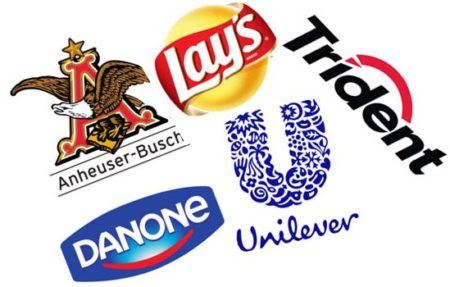Use of Crowdsourcing in the Food Industry and Food Safety
 An interesting article was just published entitled “Crowdsourcing: A new conceptual view for food safety and quality” (Jan Mei Soon, and I. Sam Saguy). Our website can be a source of answers by the registered users, and as such can be a venue for crowdsourcing.
An interesting article was just published entitled “Crowdsourcing: A new conceptual view for food safety and quality” (Jan Mei Soon, and I. Sam Saguy). Our website can be a source of answers by the registered users, and as such can be a venue for crowdsourcing.
Definition of Crowd Sourcing
According to Merriam-Webster ” Crowdsourcing is the practice of obtaining needed services, ideas, or content by soliciting contributions from a large group of people and especially from the online community rather than from traditional employees or suppliers”
There is a trend of manufacturers of consumer goods for sourcing creative ideas from users particularly in designs, creative writing, illustrations, and videos. The crowdsourcing goal is to harness the public ability to generate ideas, feedback, and solutions.
While the name “crowdsourcing” implies that it is open to all, one can specify technical requirements for expertise and know-how to participate in crowdsourcing.
Ten Years after the birth of crowdsourcing there seems to be still untapped potential for innovation in food safety and quality.
One of the issues relating to crowdsourcing is how to motivate the crowd to participate. One compensation method is a monetary incentive as shown below in the example of Lay’s potato chip flavors, where the winner was rewarded with cash incentive as well as 1% of the product’s sales for a year.
In the food safety arena, the contributors might not be motivated by monetary incentives. Many are driven by the need to create the awareness about foodborne illnesses and to identify contaminated food problems and cracking the challenge. A strong motivation might be professional reputation and being the first to solve a scientific challenge.
Who is Using Crowdsourcing?
There is an increase in the use of crowdsourcing for ideation. According to eYeka “The state of crowdsourcing”. The major manufacturers of fast moving consumer goods (such as Coca-cola, Danone, Nestle, Pepsi, and many other non-food companies) grew their usage of creative crowdsourcing by 27% when comparing 2015 with 2016. These companies’ ideation efforts, using crowdsourcing almost doubled.
A few examples of crowdsourcing use include:
Unilever used crowdsourcing to generate ideas on how to get Millennials to enjoy more its ice cream products, with over 130 ideas submitted in 10 days.
Cadbury and Oreo asked consumers to suggest new displays for its snacks and got 50 creative ideas from 24 countries.
Trident Chewing gum asked Millennial and Gen Z consumers to find ideas to engage these customers in chewing gum.
The eYeka report announces that Unilever plans to leverage Crowdsourced ideas ten-times more by 2020.
Crowdsourcing in New Product Development
 Soon, and Saguy article shows that not a lot is done in the food industry to use crowdsourcing to generate new product ideas. However, in other industries crowdsourcing is increasingly being used by companies to generate new product ideas. Some projects that involve the food industry include:
Soon, and Saguy article shows that not a lot is done in the food industry to use crowdsourcing to generate new product ideas. However, in other industries crowdsourcing is increasingly being used by companies to generate new product ideas. Some projects that involve the food industry include:
Anheuser-Busch is developing new crowdsourced ideas for newly crafted beer (Black Crown).
Danone asked its consumers to vote for new flavors of cream desserts and got over 900,000 votes in 2011.
Lay’s used crowdsourcing to create a new potato chip flavor. They received 245,825 suggestions for flavors of which 108,729 were unique. Two winning flavors were selected and sold in stores in 2011.
Crowdsourcing and Food Quality and Safety
Currently, there is limited use of crowdsourcing in food safety and quality. This field is still in its infancy. It might be possible to extract knowledge and expertise from online communities to conduct studies that can provide information on risk assessments and safety.
A useful method of crowdsourcing might be to recruit a smaller group of food safety experts to answer relevant questions, especially when larger crowds do not have the answers.
Soon & Saguy suggests that crowdsourcing initiatives among consumers had been applied in the area of food safety particularly in foodborne illness and outbreak surveillance. Other potential areas that are worth investigating include crowdvoting of cleanliness and hygiene of restaurants and effectiveness of allergen management.
A challenge remains in validating the reliability of the expert crowd. Also, experts and consumers might have different opinions about risk. The authors suggest that experts are driven by scientific objectivity, quantitative assessment of product properties like quality, and microbial level and nutritional value and probability, while consumers’ perceptions relate to human subjectivity and pay more attention to consequences.
Conclusions
Crowdsourcing can provide the means and opportunity to engage and empower food scientists and experts in the industry, government, and academia to voice scientific consensus and provide recommendations on food safety laws and regulations. However, there may be food safety projects or tasks that fail to attract a sufficient number of participants.
Crowdsourcing has the potential to help innovations and solve food safety and quality problems, by leveraging the crowd’s intelligence and capabilities to aggregate talent while reducing time and costs. Finding and motivating the crowd can help the food industry to think differently about problems.
Crowdsourcing initiatives may facilitate finding food safety solutions, predict foodborne disease outbreaks, identify contaminated food products and improve hygiene, food safety and allergen management of food businesses.
It should be noted however that maintaining the crowd engaged for a long period of time, is a major concern and this issue needs to be addressed. We are also looking for means to get our users more engaged on our site and would welcome your suggestions.
